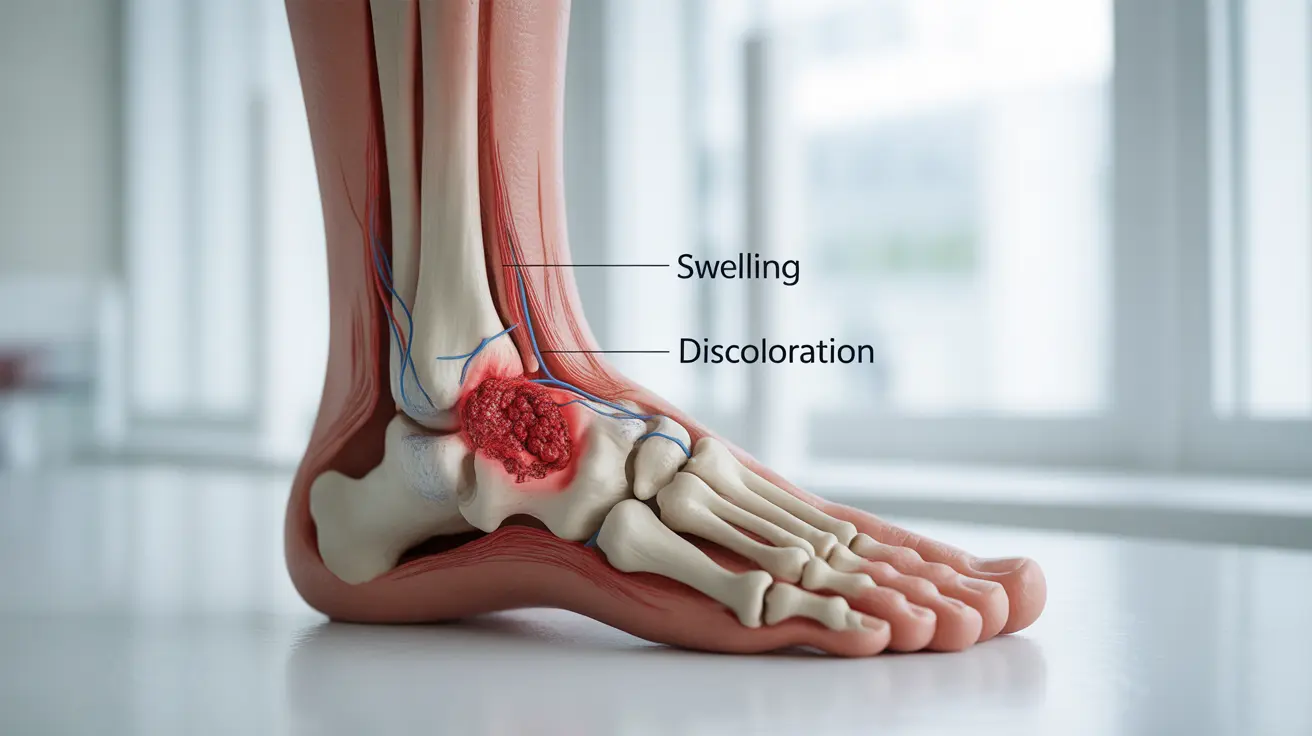A blood clot in the ankle, also known as deep vein thrombosis (DVT) of the ankle, is a serious medical condition that requires prompt attention and treatment. Understanding the symptoms, risks, and available treatments can help you identify this condition early and seek appropriate medical care.
While blood clots can form anywhere in the body, ankle clots are particularly concerning due to their location and potential complications. This comprehensive guide will help you understand everything you need to know about ankle blood clots, from recognition to prevention.
Recognizing Blood Clots in the Ankle
Blood clots in the ankle often present with distinct symptoms that shouldn't be ignored. Early recognition is crucial for preventing serious complications and ensuring effective treatment.
Common Symptoms
- Swelling in the affected ankle
- Pain or tenderness, especially when walking
- Warm sensation in the ankle area
- Redness or discoloration of the skin
- Cramping or soreness in the ankle region
Risk Factors
Several factors can increase your likelihood of developing an ankle blood clot:
- Extended periods of immobility
- Recent surgery or injury
- Long-distance travel
- Obesity
- Smoking
- Pregnancy
- Certain medications, including birth control pills
- Family history of blood clots
Treatment Approaches for Ankle Blood Clots
Treatment for ankle blood clots typically involves a combination of medical interventions and lifestyle modifications to prevent complications and reduce the risk of future clots.
Medical Treatments
- Anticoagulation medications (blood thinners)
- Compression therapy
- Regular monitoring and follow-up care
- In severe cases, surgical intervention
Supportive Care
Additional measures may include:
- Elevation of the affected leg
- Gentle exercise as approved by healthcare providers
- Proper hydration
- Wearing compression stockings
Prevention Strategies
Taking proactive steps to prevent blood clots is essential, especially if you have risk factors or a history of clotting issues.
Lifestyle Modifications
- Regular physical activity
- Maintaining a healthy weight
- Staying hydrated
- Taking breaks during long periods of sitting
- Quitting smoking
When Traveling
- Perform ankle exercises
- Walk regularly during long trips
- Wear loose, comfortable clothing
- Consider compression socks for long flights
Frequently Asked Questions
What are the symptoms of a blood clot in the ankle, and how is it treated?
Symptoms include swelling, pain, warmth, and redness in the ankle area. Treatment typically involves blood-thinning medications, compression therapy, and lifestyle modifications. Your doctor will determine the most appropriate treatment based on your specific situation and medical history.
Can a blood clot in the ankle cause a pulmonary embolism, and what are the warning signs?
Yes, an ankle blood clot can break loose and travel to the lungs, causing a pulmonary embolism. Warning signs include sudden shortness of breath, chest pain, rapid heartbeat, and coughing up blood. This is a medical emergency requiring immediate attention.
How can I prevent blood clots from forming in my legs, especially when I'm not very active?
Regular movement, even when confined to a small space, is crucial. Perform simple exercises like ankle rotations, stay hydrated, and consider wearing compression stockings. If you must sit for long periods, take breaks every 2-3 hours to walk and stretch.
What are the benefits and risks of wearing compression stockings for treating DVT symptoms?
Compression stockings help improve blood flow and reduce swelling. Benefits include decreased pain and lower risk of post-thrombotic syndrome. Risks include skin irritation and improper fit leading to circulation problems. Proper sizing and application are essential.
What are the differences between blood thinners prescribed for DVT, such as warfarin versus newer medications?
Traditional blood thinners like warfarin require regular monitoring and dietary restrictions. Newer medications (NOACs) typically don't require frequent blood tests and have fewer food interactions. However, they may be more expensive and might not be suitable for everyone. Your healthcare provider will determine the best option based on your specific circumstances.




